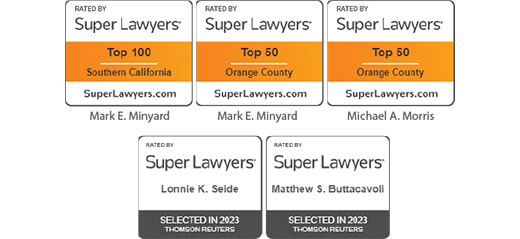
Will vs. Living Trust vs. Living Will: Key Differences
When an estate plan is developed, some of the key components include a will, living trust, and living will. Since these terms are frequently confused, let’s look at each and explain the differences.
What is a Will?
A will is a legal document detailing what an individual wants to happen after they die. This includes their final wishes regarding their remains, as well as how they want their money, assets, and property to be distributed. It also allows individuals to name a personal guardian to care for minor children, and a person to manage property if it must be left to minor children. However, a will does not allow you to entirely avoid formal probate in California (except in cases of Small Estate Affidavits or Spousal Set Aside). Instead, a will may allow streamlining of the probate process.
What is a Living Trust?
Much like a will, a living trust (also called a “revocable living trust”) documents how you want your affairs handled after you pass away. The major difference between a will and a living trust is that living trusts do not require going through probate (i.e., Probate Court). Additionally, a living trust will take effect as soon as it is created – it allows you to control your assets (real property, personal property, investments, cash, etc.) while you are still alive, but then have it distributed to beneficiaries upon your death.
There are numerous considerations to having a living trust, so consider the pros and cons with your attorney. In addition to not requiring going through probate, a living trust can also: safeguard your assets if you become mentally incompetent; provide more flexibility and control over the timeline and disbursement to beneficiaries; and maintain privacy, since it is managed by the trustee and not entered into public court records. On the con side, a living trust is more complex than a will, and involves paperwork and record-keeping, which can be costly and time-consuming.
What is a Living Will?
Another name for a “living will” is an “advance healthcare directive.” This allows a person to dictate how they wish to be cared for in a life-or-death situation. It lets your physician, family, and friends know your health care preferences, including the types of special treatment you want or don’t want at the end of life. It also specifies your desire for diagnostic testing; approval or disapproval or certain surgical procedures; the location of your primary care facility; medications to avoid; whether or not to attempt cardiopulmonary resuscitation; and organ donation.
Do You Need Some or All of Them?
While you should seek the advice of your attorney on the appropriate selection of these documents for your situation, some generalizations can be made. Most people who wish to have an estate plan are thinking about the impact of their passing on their loved ones. As such, a living will/advance health care directive is typically recommended to ease decision-making in a life-or-death circumstance. As for a will, your attorney can advise whether to include both it and a living trust in your estate plan, which can allow you to take advantage of each tool’s benefits. The use of a living trust is less clear-cut, so discuss the pros/cons and your specific situation with your attorney.
Specialized Estate Planning Expertise
Taking the time and effort to create an estate plan is one of the most thoughtful steps you can take for your family and loved ones. For many families, the less decisions that are left for your heirs, the better it is for all concerned.
At Mortensen & Reinheimer, PC we have decades of experience in helping clients to navigate through myriad issues in estate planning. If you need legal expertise in addressing your specific estate planning needs, please contact Mortensen & Reinheimer, PC at (714) 384-6053 to make an appointment, or use our online contact form. Our website is http://www.ocestateplanning.net.

About the author:
Tamsen R. Reinheimer, Attorney, is a Certified Specialist in Estate Planning, Trust & Probate Law (The State Bar of California Board of Legal Specialization). She has significant experience in all aspects of estate planning, trust administration, and probate. Contact Tamsen at tamsen@ocestateplanning.net.








